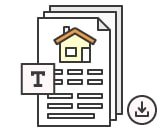California Sublease Agreement

A California sublease agreement is a legal contract that allows a tenant to rent out all or a portion of the property to a subtenant in exchange for regular payments.
Does a Tenant Need the Landlord’s Permission to Sublet in California?
A tenant does have to get the landlord’s explicit written consent to sublet in California. Even after consent is given, a landlord still has the right to reject a subtenant if they are unqualified, such as for having a high debt-to-income ratio or poor references. Read More
Standard California Sublease Agreements
- The Names of the Parties – The original tenant under the lease is named in the sublease and is called the “Sublessor.” The third-party that is subleasing the rental unit is named in the sublease and is called the “Sublessee.”
- Rental Unit Location – The address for the rental unit as described in the original lease.
- Term – List the exact date of the sublease beginning and ending date.
- Rent – List how much the rent is, when, and how to pay it.
- Utilities – The utilities to be paid by the Sublessor and those that are to be paid by the Sublessee.
- Liability – The sublessee will be liable for any damages to the Sublessor. The Sublessor has the ultimate responsibility to pay for any damages as stated in the original lease agreement.
- Authorized Occupants – A list that identifies the new tenant(s) and those who are authorized to live in the rental unit including any policy about short-term guests.
- Security Deposit – This security deposit is held by the Sublessor (not the landlord). California state law does require that the security deposit be limited to no more than two months’ rent (unfurnished) or three months’ rent (furnished).
- Pet Deposit – If a tenant has a pet, the total security deposit still cannot exceed a total of two (unfurnished) or three (furnished) months’ rent.
- Return of Security Deposit – California law requires the security deposit to be returned within 21 days after a tenant vacates a rental unit.
- Inventory of Included Items – The list of items in the rental unit that are part of the sublease (furniture or appliances).
- Lead-Based Paint Notice – Under Federal law, if the rental unit’s premises were built before 1978, the Sublessee must be given a written warning notice, called a Lead-Based Paint Disclosure.
- Master Lease Inclusion – A copy of the Master Lease is attached to the sublease. If any exceptions in the Master Lease are not included they should be clearly stated in this section.
- Disputes – A description of how disputes between the Sublessor and Sublessee are to be settled, which may include mediation and binding arbitration to avoid more expensive legal proceedings.
- General Conditions – A statement that the written sublease agreement contains all of the agreements between the parties and can only be modified by written consent of the parties to the agreement.
- Smoking Policy – If smoking is restricted in the rental unit and any designated smoking areas are identified in the sublease.
- Landlord’s Consent – This section describes how the landlord is asked to consent (if consent is not already included in the Master Lease). Tenants may create a signed sublease that is conditional on being accepted by the landlord before the sublease becomes effective.
Special Considerations in California
In some areas of California, subletting laws favor tenants over landlords.
In San Fransisco, even if a lease forbids subletting, a landlord cannot unreasonably refuse subletting, unless the lease has a clause written in boldface or enlarged type with a separately initialed space that includes a written explanation of the prohibition.
California also has the “Duty to Mitigate” law which means that even if the landlord is against subletting they are legally required to take reasonable steps to cover the rent in any way possible. This could include accepting a qualified subtenant to avoid lost rent.
Tax Implications of a Sublease in California
A sublessor may be subject to the California Transient Occupancy Tax (TOT) if they sublet a property for less than 30 days. The tax rate varies by city and county typically between 8% and 15.5%.
Frequently Asked Questions
Is subletting legal in California? Is subletting legal in California? Subletting is only legal in California if the lease specifically allows it. If it is not addressed in the lease, or is prohibited in the lease, then a tenant can be evicted for subletting their rental unit to someone else. Read more »
Residential Sublease Agreements in Other States






Other California Rental Templates

Residential Lease Agreement

Month-to-Month Rental Agreement


Room Rental Agreement

Lease Termination Notice



![]()
![]()
![]()
![]()
![]()
![]()
![]()
![]()
![]()
![]()
![]()